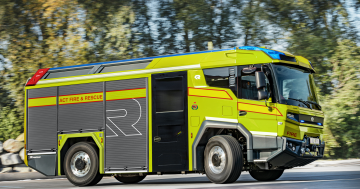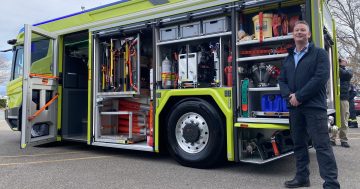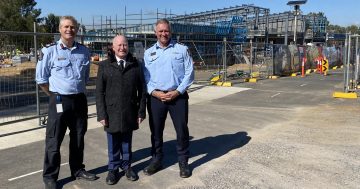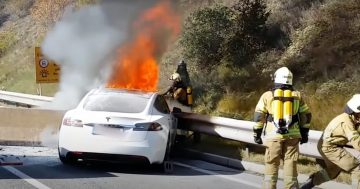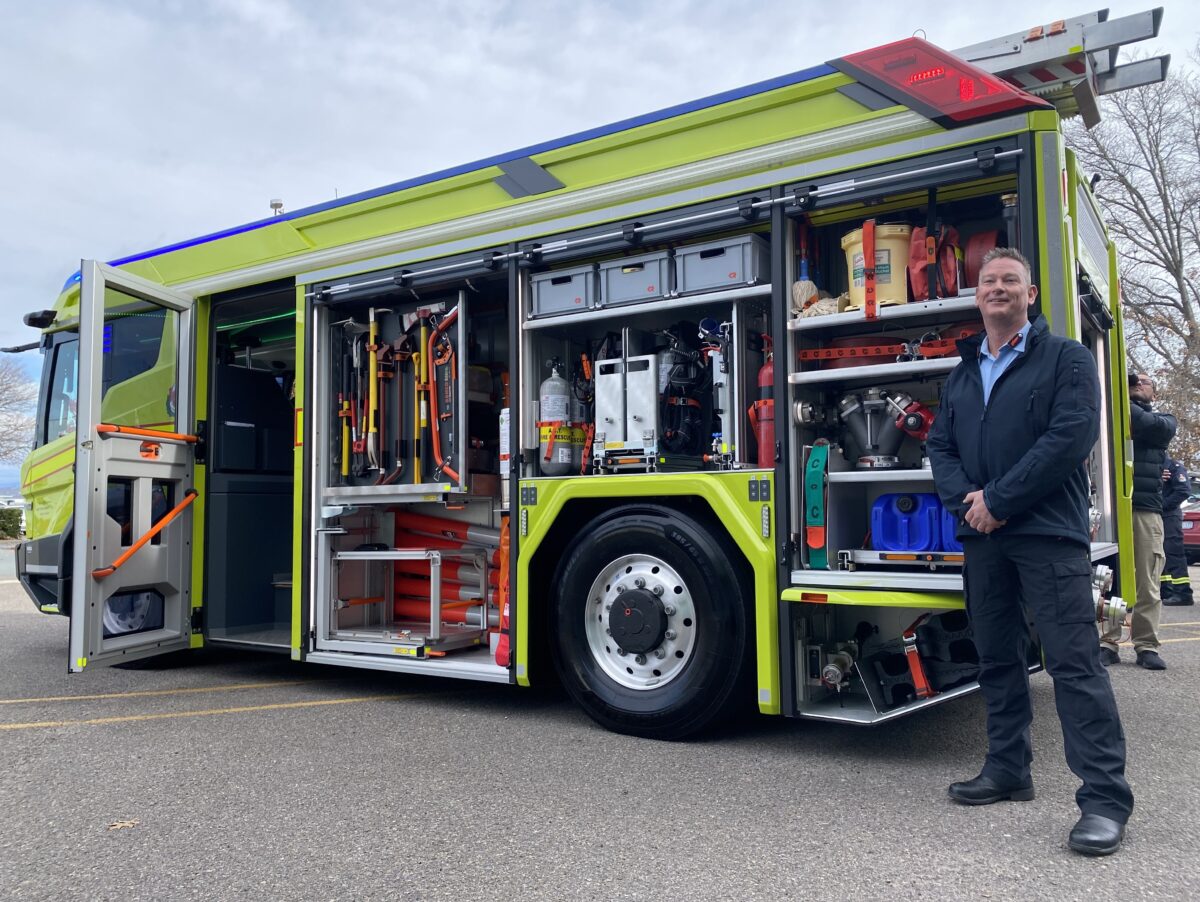
ACTF&R chief officer Matthew Mavity standing by the country’s first plug-in hybrid electric pumper. Photo: Claire Fenwicke.
The ACT’s emergency services will complete a “comprehensive evaluation” of a new plug-in hybrid fire truck ahead of its first shift early next year.
When it was unveiled in early June, the $1.6 million Rosenbauer was touted by the ACT Emergency Services Agency (ESA) as “ground-breaking technology” and the first of its kind in the country.
“The next-generation vehicle supports the ACT Government and ACT Fire & Rescue’s commitment to zero and low-emissions vehicles as we work towards a sustainable and environmentally responsible future,” the ESA said.
Since then, however, the ACT’s Auditor-General has found the ESA “did not adequately assess the value-for-money of the vehicle prior to ordering it” and the procurement process was “poorly conducted”.
The truck is fitted out by German-based fire supply company Rosenbauer, with a claim to fame that not only includes electric battery power (with diesel backup) but also a ‘rumbler’ component to the siren so pedestrians and motorists can ‘feel’ as well as hear it coming.
The battery can handle two hours of general-duty driving, before the engine kicks in to provide a total range of about 1000 kilometres.
Cameras also replace rear-view mirrors, the air in the cabin is recycled through high-efficiency particulate filters to keep it clean and free from outside dust and smoke, and the whole vehicle can hydraulically lower itself for easier access by firefighters.
The cost of all this amounted to $1.5 million (excluding GST), or about $700,000 more than a conventional diesel-powered pumper in the ACT Fire & Rescue fleet.
The report found this different to what the government was initially told during a briefing in August 2019, when “preliminary discussions with the contractor have indicated that the cost would be similar to the current cost of a fire appliance, i.e. approximately $1 million”.
By this stage, Rosenbauer had also been approved as the supplier of the truck, but with “poor documentation” as to why.
“Research into potential suppliers was undertaken via an internet search,” the report noted.
Later on, it said the truck was chosen quickly so ESA could “announce the partnership at the Australasian Fire and Emergency Service Authority Council conference on 28-29 August 2019, and be the first state in Australia to progress an electric fire appliance”.
Following a request for tender process, the ESA signed a contract with Rosenbauer Australia in September 2020 for four new fire trucks – three diesels and a plug-in hybrid.
The official business case noted a lower risk for firefighters breathing carcinogens because of the hybrid engine, and a lower risk of truck rollover and knee and back injuries to firefighters because of the low-slung design. But the report found “no evidence” any of this was actually tested.
“This is in contrast to the assessment that was undertaken of the details of the diesel pumpers that were then procured,” it read.
A single fire pumper in the ACT’s fleet runs the equivalent of 98 days every year and burns through 18,500 litres – or $27,000 worth – of diesel. The report acknowledged the hybrid’s lower running costs, but found import duty, training and delivery costs were excluded from the total purchase amount, unlike the diesels.
“These costs amounted to $55,405 (excluding GST) for each of the diesel pumpers.”
The report ends with a recommendation the ESA “formally assess and confirm that the hybrid electric fire truck meets the needs of the ESA as an urban pumper in the Territory”.
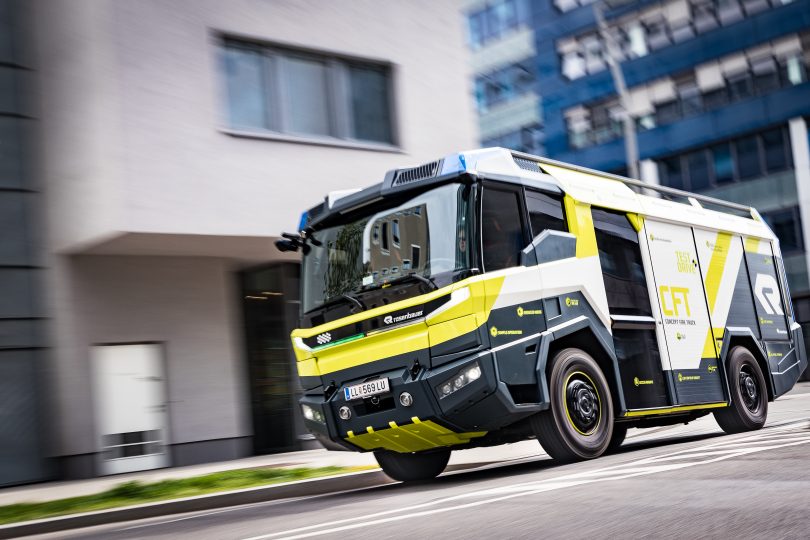
Rosenbauer was contracted in September 2020 to supply three diesel fire trucks and one plug-in hybrid. Photo: ESA.
The ESA has responded with plans to “complete and implement a comprehensive evaluation plan and training plan”.
“Several factors contributed to the value-for-money considerations including the value of innovation, improved outcomes for the environment, community safety, and improved firefighter safety,” an ESA spokesperson told Region.
“Our firefighters assisted greatly in the design of this vehicle, ensuring their safety, health and wellbeing would be incorporated and prioritised. We are incredibly proud and thankful for the work they have contributed.”
The electric truck is set to start work in early 2024, but as for when or if there will be more, the jury is still out.
“Because this is so revolutionary, we need to get the telemetry out of the vehicle to see how it’s performing,” ACT Fire & Rescue Chief Officer Matthew Mavity said last month.
“When we first looked at this vehicle, we compared its capabilities, on paper, with our busiest pumper in our fleet. From that data, we estimated it would only need the range extender twice a year, so we’ve now got to check that against real-life operation.”












